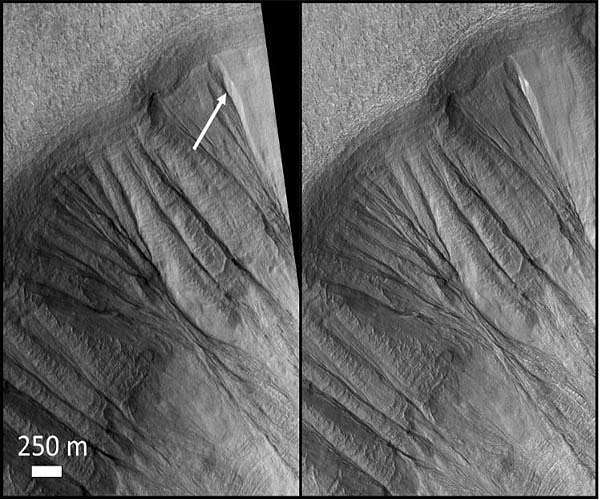19.10.2024

Martian ice deposits may hold conditions suitable for photosynthetic life, according to a recent study published in 'Communications Earth and Environment'. The research suggests that regions of exposed ice in the mid-latitudes of Mars could offer a protective environment for microbial life, shielding it from harmful ultraviolet (UV) radiation while still allowing enough light for photosynthesis to occur.
Mars' surface is exposed to high levels of UV radiation, making it nearly impossible for life to survive on the planet's surface. However, researchers propose that life might exist beneath a layer of ice thick enough to block UV rays but thin enough to permit visible light needed for photosynthesis. This balance could create what is termed a "radiative habitable zone" just below the surface.
The study, led by Aditya Khuller and colleagues, examined whether such a zone could form within the dusty ice observed on Mars. They determined that highly dusty ice would block too much sunlight for photosynthesis, but ice with dust concentrations between 0.01% and 0.1% could potentially support life at depths ranging from 5 to 38 centimeters, depending on the size and purity of the ice crystals. In cleaner ice deposits, the habitable zone could extend deeper, between 2.15 and 3.10 meters.
In addition to offering protection from radiation, the researchers note that dust particles within the ice could cause localized melting at depths of up to 1.5 meters, providing the liquid water necessary for any potential photosynthetic life. While the polar regions of Mars would be too cold for this process, subsurface melting could occur in mid-latitude areas, specifically between 30 and 50 degrees latitude.
Despite these findings, the researchers emphasize that the existence of a habitable zone does not confirm the presence of life on Mars. However, the results point to a few specific locations in the Martian mid-latitudes as key targets for future exploration missions searching for signs of life.
Quelle: SD
